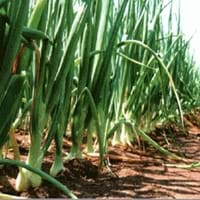Life Span
Perennial
Perennial
Origin
North America, United States, Northeastern United States, Mid-Atlantic United States, Southeastern United States, North-Central United States, South-Central United States, Texas
World/Pandemic, North America, Europe, Russia/Siberia, Northern Africa, Asia, India
Types
not available
White Spanish
Gladalan White
Number of Varieties
Not Available
Habitat
Boggy areas, Fens, Fields, meadows, Swamps, Woodlands
Cropland, Farms, gardens
USDA Hardiness Zone
4-9
Not Available
AHS Heat Zone
8-4
Not Available
Sunset Zone
1a, 1b, 2a, 2b, 3a, 3b, 4, 5, 6, 7
A1, A2, A3, H1, H2, 1a, 1b, 2a, 2b, 3a, 3b, 4, 5, 6, 7, 8, 9, 10, 11, 12, 13, 14, 15, 16, 17, 18, 19, 20, 21, 22, 23, 24
Habit
Thicket/Colonizing
Upright/Erect
Flower Color
Not Available
White, Yellow green
Flower Color Modifier
Not Available
Bicolor
Fruit Color
Red
Not Available
Leaf Color in Spring
Not Available
Green
Leaf Color in Summer
Not Available
Green, Gray Green
Leaf Color in Fall
Not Available
Green, Gray Green, Yellow green
Leaf Color in Winter
Not Available
Not Available
Leaf Shape
Oblovate
Linear
Plant Season
Spring, Fall, Winter
Not Available
Sunlight
Full Sun, Partial Sun
Full Sun, Partial Sun
Type of Soil
Clay, Loam
Loam, Sand
The pH of Soil
Acidic, Neutral, Alkaline
Neutral
Soil Drainage
Average
Well drained
Bloom Time
Late Spring
Late Spring, Early Summer
Tolerances
Not Available
Drought
Where to Plant?
Ground, Pot
Ground, Pot
How to Plant?
Divison, Seedlings
Seedlings, Sets
Plant Maintenance
Medium
Medium
Watering Requirements
Keep the ground moist but not water-logged
Keep the ground moist but not water-logged, Requires a lot of watering, Water twice a day in the initial period
In Summer
Lots of watering
Lots of watering
In Spring
Moderate
Moderate
In Winter
Average Water
Average Water
Soil pH
Acidic, Neutral, Alkaline
Neutral
Soil Type
Clay, Loam
Loam, Sand
Soil Drainage Capacity
Average
Well drained
Sun Exposure
Full Sun, Partial Sun
Full Sun, Partial Sun
Pruning
Prune after flowering, Prune in early spring, Remove damaged leaves, Remove dead branches, Remove dead leaves
Dispose of diseased portions, Prune after flowering
Fertilizers
All-Purpose Liquid Fertilizer, Compost, Fertilize every year, Mulch, Nitrogen
14-14-14 Fertilizer, All-Purpose Liquid Fertilizer, Fertilize the soil before planting
Pests and Diseases
Aphids, Apple Maggot, Fall Webworm, Red blotch, Scale
Aphids, Downy mildew, Leaf rust, Slugs, Soft scales
Plant Tolerance
Not Available
Humidity, Shade areas, Shallow soil
Flower Petal Number
Not Available
Single
Fragrant Bark/Stem
No
Yes
Foliage Texture
Not Available
Medium
Foliage Sheen
Not Available
Matte
Attracts
Birds
Aphids, Insects, Snails
Allergy
Not Available
Eye irritation, Gastric, Oral Allergy
Aesthetic Uses
Showy Purposes
Not Used For Aesthetic Purpose
Beauty Benefits
Not Available
Anti-ageing, Blackheads, Good for the Scalp, Reduce Bruises
Environmental Uses
Air purification
Air purification, Indoor Air Purification, Insect Repellent
Medicinal Uses
Not Available
Analgesic, Asthma, Bronchitis, cholesterol-lowering, Cough, Diabetes, Digestion problems, Diuretic, High blood pressure, Respiratory Disorders, Rheumatism
Part of Plant Used
Fruits
Whole plant
Other Uses
Used As Food, Used as Ornamental plant
Animal Feed, Culinary use, Oil is used for aromatherapy, Sauces
Used As Indoor Plant
No
Yes
Used As Outdoor Plant
Yes
Yes
Garden Design
Cutflower, Mixed Border, Screening, Wind Break
Edible, Herb / Vegetable
Botanical Name
ARONIA arbutifolia
ALLIUM cepa 'White Ebenezer'
Common Name
Red Chokeberry
Garden Onion, White Onion
In Hindi
लाल Chokeberry
प्याज
In German
Rote Apfelbeere
Zwiebel
In French
Red Chokeberry
Oignon
In Spanish
rojo Chokeberry
Cebolla
In Greek
κόκκινο Chokeberry
Κρεμμύδι
In Portuguese
Red Chokeberry
Cebola
In Polish
Red aronii
Cebula
In Latin
arbutifolia
cepa
Phylum
Magnoliophyta
Magnoliophyta
Class
Magnoliopsida
Liliopsida
Order
Rosales
Asparagales
Family
Rosaceae
Liliaceae
Clade
Angiosperms, Eudicots, Rosids
Angiosperms, Monocots
Tribe
Not Available
Allieae
Subfamily
Not Available
Allioideae
Number of Species
Not Available
Season and Care of Red Chokeberry and White Onion
Season and care of Red Chokeberry and White Onion is important to know. While considering everything about Red Chokeberry and White Onion Care, growing season is an essential factor. Red Chokeberry season is Spring, Fall and Winter and White Onion season is Spring, Fall and Winter. The type of soil for Red Chokeberry is Clay, Loam and for White Onion is Loam, Sand while the PH of soil for Red Chokeberry is Acidic, Neutral, Alkaline and for White Onion is Neutral.
Red Chokeberry and White Onion Physical Information
Red Chokeberry and White Onion physical information is very important for comparison. Red Chokeberry height is 180.00 cm and width 12.70 cm whereas White Onion height is 60.00 cm and width 10.20 cm. The color specification of Red Chokeberry and White Onion are as follows:
Red Chokeberry flower color: Not Available
Red Chokeberry leaf color: Not Available
White Onion flower color: White and Yellow green
- White Onion leaf color: Green
Care of Red Chokeberry and White Onion
Care of Red Chokeberry and White Onion include pruning, fertilizers, watering etc. Red Chokeberry pruning is done Prune after flowering, Prune in early spring, Remove damaged leaves, Remove dead branches and Remove dead leaves and White Onion pruning is done Dispose of diseased portions and Prune after flowering. In summer Red Chokeberry needs Lots of watering and in winter, it needs Average Water. Whereas, in summer White Onion needs Lots of watering and in winter, it needs Average Water.





